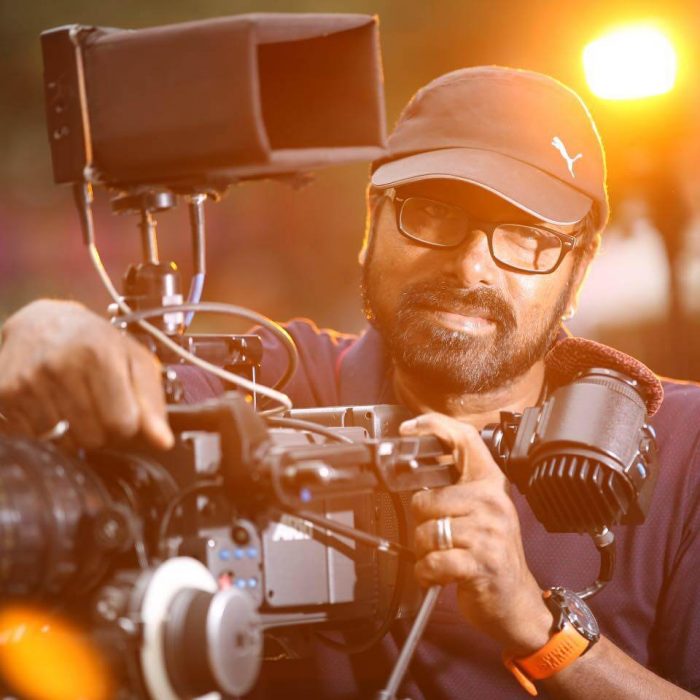
In conversation: R.D.Rajasekhar ISC
Jun 27 2020
R.D. Rajasekhar is one of the best cinematographers in Indian film industry who set new trend in visual language and his camerawork has helped enhance the visual beauty of many films. A gold medalist in D.F.T., who has won many awards and accolades for his cinematography, he has worked for over 40 films.
R.D.Rajasekhar shares his visual journey with SICA.
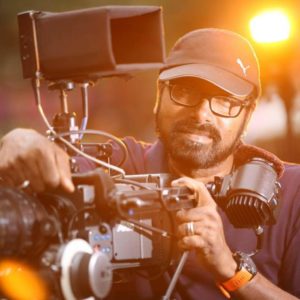
Tell us about your Cinematography journey. How it all started ?
I studied B Sc Zoology in Government College, Kumbakonam and lived at Mayavaram, about 12 kms away. I traveled by train everyday from home and back. There was a theatre close to the college and this is where my friends and I would hangout after college till 4.30, 5 but we can never watch a film till the end as our train bound for home would start around the same time. Hence were forced to leave at the end of the film just before the climax. So, I have never seen the endings of many films and would write my own climax and later check with my friends if that was correct. On many occasions, I was thrilled that what I had written the exactly the way the film ended. So I thought to myself, why not try making a film.
I was not aware of anything about filmmaking till my graduation, but I had the habit of reading books. I often go to the library and spend most of my free time & from there, a friend of mine suggested, “Why can’t I get into ‘cinema ?” He gave the spark to dig deeper into the cinema and I started exploring then. With my friends, I released a Hand-written magazine called ‘Camera’ and kept it in the Library. Though initially no one has touched it, finally one person got to read and wrote few lines appreciating our efforts. The appreciation I got for the book gave me an immense boost to pursue a course at Adyar Film Institute,Chennai. I initially applied for the Direction course, but I couldn’t get the seat for the year. Then next year I applied for both Direction and Cinematography and I got both. Though I had both options, one of my well wishers guided me to take Cinematography. He advised me that it is easy to nurture aesthetic abilities by reading and writing, but learning technicalities is very tough and thus finally I chose Cinematography.
My days at film Institute was most beautiful learning cinematography, but it was not easy to get wide and variety of books on cinematography like today.
Here i appreciate Cinematographer C.J.Rajkumar books on cinematography in Tamil is a boon to upcoming cinematographers to learn art of cinematography in mother tongue..i like his books especially click, olioviyam and Thisai Oli.
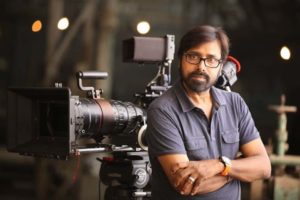
Interesting. We know you have assisted the Director – Cinematographer Rajiv Menon before going as an Independent Cinematographer. Tell us your experience with him.
Mr. Rajiv Menon was my senior in the Film Institute and he was an acclaimed Cinematographer and an ad filmmaker at that time. Initially I wanted to assist Mr. P.C.Sreeram, but unfortunately one of my classmates, Cinematographer M.S Prabhu wanted to join with him. So, I decided to join Rajiv Menon.I just went straight to his house in the morning around 5.30. He had just returned from jogging and opened the door himself. He was eating sandwiches and offered me some without even knowing me. I learnt hospitality from him. While joining he asked me ‘where do you want to work ? In Advertising or Feature films ?’- he asked. I replied, ‘I want to learn advertising and want to do feature films’. I think the answer must have moved him and he gave me the opportunity to work both in Advertising and Feature film.
It was a great learning experience, those years working with Rajiv Menon and I have learned many things from him. I feel he is a complete filmmaker and working with him on advertisements even gave me the opportunity to work on the scripts also, as i was good in Tamil. Those years were a great learning phase for me.
We heard that you worked as associate director with Rajiv Menon for ‘Minsara Kanavu’ too. How did it happen?
Yes. Minsara Kanavu was Rajiv Menon’s first directorial venture and he wanted only direction and cinematography was done by Venu. Once I told Rajiv Menon that I wanted to do direction and he was so glad, he remembered that & gave me the opportunity to work with him as associate director for the film. It was a wonderful experience to work in the film.
Minsara Kanavu was a trend setting film at that time and we heard you have used a full bunch of HMI’s for a song sequence, which were very new and rare to find.
Yes, we have used several HMI’s for the ‘vennileve’ song hanging overhead to give the effect of diffused Moonlight and skylight. Cinematographer B.Venu is the man of using ‘contrast lighting’ and HMI’s gave the contrast needed for the song. Needless to say it was one of the most beautiful songs made till date.
Also, we heard Gautham Menon too worked as an assistant for the film ‘Minsara Kanavu’.
Yes,Gautham Menon joined as a new assistant to Rajiv Menon at that time and we worked together for the film. There he disclosed the plot of his first film he was writing and it was a very interesting fresh plot and that was ‘Minnale’. I appreciated him and he told me that I will be the cinematographer for the film. It was a life-turning moment and triggering moment for me to start my career as cinematographer & Minnale Happened.
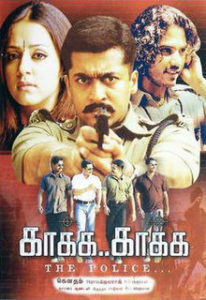
Tell us your experience with Gautam Menon in Minnale and in your next combo ‘Kakka Kakka’ which garnered much appreciation for both of you and has attained its cult status. Tell us your experience working with him.
Minnale was the maiden film for both us and we were ready to explore new things. Even I very much appreciated the story when Gautam first narrated it to me. It was a fresh plot at that time and we want to bring the newest style in visuals too. I even requested for ARRI 435 which was only used in advertising shoots at that time.
I always had a belief whatever the information you study and how many films you see for references, what matters to me most is ‘what you create on set with the available things at that time is the final’. That way it was a great experience working for minnale.
In terms of ‘Kakka Kakka’, I have pushed myself to give different styles of images and I really wanted to avoid cliched things. I have chosen to shoot in Anamorphic and used Kowa Lenses for the film. I have tested all lenses and fixed 24mm as the prime lens for the whole film. although it creates a very wide distorted image, I felt, if we keep it in a certain position it creates a very beautiful image. So I have used predominantly the 24mm wide lens for the whole film.
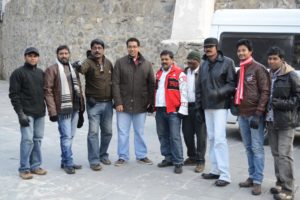
Interesting. But, your zoom lens with a jolted feel garnered huge appreciations for you. It was a new style and how did you do it ?
I have used a technique where I have fixed and used the rod used in the focusing ring for the zoom lens. I will shift the zoom dynamically and since being the film – a love-thriller genre,that jolt created a different mood for the film.
Also, I have used handheld for certain fights and even I have fixed the height of the camera a bit lower than the regular height. With the 24 lens , handheld and with the camera height, it added a different feel altogether. Even for one particular fight sequence where the actor is running and entering a building, which was in construction.Thus, there will not be any light sources practically. So I have a series of hundred bulbs hanging over the top and the different lights added a different contrast for the scene.
Kakka Kakka was a very special film for both Gautham Menon and me & we had a very good rapport in the film. We even went for shoots at 2am. Particularly for the initial and climax portions of the film I wanted to shoot in natural blue light from the sky before sunrise. We would start by 2am and will end the spot at 4 and shoot till 6.30am.Those shots were very iconic and even one of my favourite portions in the film.
Even the editing pattern of the film started a new trend in cinema.
Yes. Editor Anthony’s work has a huge part in the film’s visuals too. He has worked with Gautam and me since our advertising ages. So we know about each other very well and thus when we shoot, we keep in mind that Anthony will use this kind of shots and we take additional shots which aids the story. For example, there will be one shot, where the hero will throw an empty can and we know Anthony will need a closeup of it & we shot that exclusively. And even in shot when the hero stops the vehicle, we shot the close up of tyre. With the wide lens and the low angle added a beautiful dimension.Anthony very much liked and used those shots and Anthony was appreciated very much for its editing style. Likewise the whole film was a 100% mutual collaboration effort of a DIrector-Cinematographer & Editor.
Tell us your experience in working with the National award winning Director Jayaraj.
4 the people- directed by Jayaraj was the first film for me in Malayalam. I was quite excited when I got the chance to work with him. I have known the style of his work and was quite excited to work with his style of filmmaking.But, Director Jayaraj wanted to do a look and style that I have tried in my earlier films. I was awestruck that he has seen my films and he even appreciated my previous works. I really got many appreciations for the song “Lajjavathiye” for its camera work and I have used extreme wide angle lenses, coupled with dynamic zooms and even used cranes in boats. The film was a huge hit and I can proudly say, the visuals gained tremendous appreciations & even many have tried the same techniques in different films.
Very True. Could you share with us about your other acclaimed film ‘Thotti jaya’. It has a unique colour and lighting pattern.
Basically I like to work at night and Thotti Jaya has many night sequences. Also, the story travels in different locations and even the characterization of simbu was different- rigid, fully in beard and he wears only black clothes. So, I fixed one thing in my mind that I have to use more blacks in the movie. In terms of lighting, I used extreme contrasts and I planned to work more on shadows and made assured that I should get whites as white and blacks as black. Faces were lit with half light and i didnt even use a fill for many shots and have used higher contrast ratios.This way I achieved the look and contrast needed for the film and certainly Thotti jaya was one close film to my heart.
I usually take one prominent thing as a crucial point to use in the film. Before starting any film, I usually do research and find similar kind of films and I will zero in on the look for the film- like the lighting pattern, contrast, lensing and etc.,. Even for some films I will not shoot close to 6 feet, will not go beyond 50mm even fix the camera height bit higher than the normal to make the actors height bit exaggerated. I feel it is a greater responsibility for a cinematographer to shoot the actors at the right angle and position to make them pleasing and look good.
Ghajini created the biggest leap in your career and you even worked for its Telugu version of Kaaka kaaka ‘Gharshana’. Share your experience with us in its making
Ghajini is another very personal and a challenging film in my career. We had a big challenge that the film’s villains are identical twins and we need to do several double action action sequences. Initially we tried motion control for the shoot, but it was very time consuming at that time. So, I planned to shoot it manually like a motion control shot, but we need to redo all the movement shots at the same pace with perfect timing. I have used a similar type of double action shot in the Manmadhan movie for the song ‘ Vaanam inna’. In that simbu did the dual role and I handled the shot in handheld without any visual effects. That way we worked for the last portions of Ghajini involving double action.We used the track and trolley and carefully marked the positions during the movement & will repeat the same movements for the consecutive shots, maintaining the same time and marking. We did body-double by masking the head and we fixed the real face in post.
For Gharshana we worked the same as we worked in ‘Kakka Kakka’ but in a more refined form. Mostly we reenacted the same shots and we excluded a few portions which were not needed. The whole film is all about the difference between Suriya and Venkatesh where both were best in their own ways.
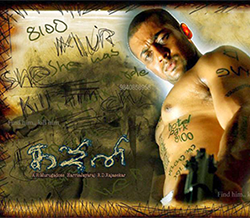
You have worked with several newcomers and tell us your experiences with them.
Yes.I really like to work with young filmmakers and I easily develop a rapport with them. When they are coming with the script, I will read it fully and will give them some reference films and will ask them what kind of look they are aiming for. I will give the assurance that I will create the look and feel what they want till the end of film. Even if they are misled, I will guide them like a friend and will tell them that it will work that way. I think that may be the reason I have been getting many films from newcomers.
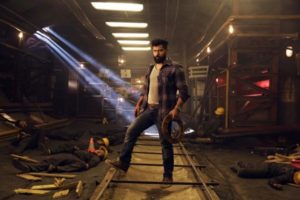
Particularly in recent films, Irumugan- the lab portions and in Imaikka Nodigal – the railway station portions were very much appreciated for your work. Tell us something about it.
Irumugan was a thriller film and the lab was the villain’s den and it was a constructed set. I have completely used practical lamps for the set and I have instructed the set designers to fix the lamps in the set. I have used colour corrected LED lights and have created the warm in the camera’s colour temperature.I really don’t believe in creating the colours at DI and to the most i will create it in set.
Coming to Imaikka Nodigal we shot the train sequences in Bangalore.We have got permission to shoot in a suburban station only from 11.30pm-4.30am. It was one of the most challenging sequences as it was tough to control the power. We need to find the power points and we need to switch on and off complete railway station for that sequence.I got to know that there where 5 major power controls over the railway station and i employed my assistants over the power controls at various places…with wireless talkie commanded exact point of all shutting down the power to get all lights to pitch darkness was great challenge..We have gone with the practical sources mostly and used small hanging lights to fill. And when Anurag Kashyap comes all the lights will switch off and we have placed a small light to give a feel that he is standing.
And regarding the lens I have used the Zoom lens a lot and will shoot mostly upto 270… I will not go for 300..will reserve that last 30mm for reframing towards end of the shot or to give a surprise zoom in and always go a bit lower than the fullest zoom.It has a unique focus and unique background details. Mostly I settle down with f4-5.6 as my exposure and for most of my films I have been using Cooke 5i lens and for the next film I am going to use Cooke 7i lens.
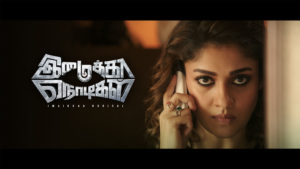
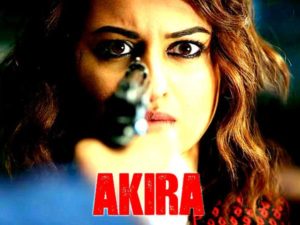
Tell us about the working experience of your Bollywood film “Akira”.
It is a remake of tamil film ‘Mouna Guru’ and the only changes is its protagonist. Sonakshi Sinha did the role and conversely we did the film in a different look. We have used block lenses completely for the whole film and deliberately avoided zoom. We shot the whole film with two cameras simultaneously and used a lot of practical lamps in the film. In Mounaguru Cinematographer Mahesh Muthuswami had used minimal light setup with a more realistic approach. Though i shoot in hindi i dont want to spoil the originality of the film. We shot the film in 60 days. It was a nice experience working in Bollywood and I really appreciate their approach,particularly the Gaffer system.
What is your thought about the upcoming streaming OTT platforms?
I really appreciate and welcome these platforms mainly for its web series. Recently I have been watching many web series across platforms and evenI see few good web series in Hindi and in Apple Tv platform.Their storytelling is really amazing and the technical efforts are really appreciable.
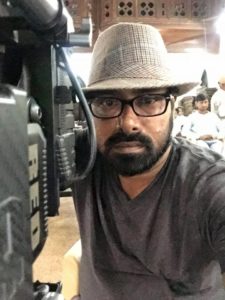
How would you define your style?
Once a graphic designer told me that all my shots move like a plus mark. I keep the monitor in mind and plan the shot well. My strong area is operation. When I pan from the first to last frame I want the composition to be correct, even in the intermittent frames.
One school of thought says that a cinematographer should not have a distinct recognizable style but rather his work should go along with the script. What do you think?
Each film has a particular kind of script and you do need cinematography that will suit the script. However, I feel it needs to bring my work recognition; otherwise it is of no use. I have to do something that shows my style.
Drafted by – Gowrishankar
conversation with : C.JRajkumar and Mahesh Muthuswami
